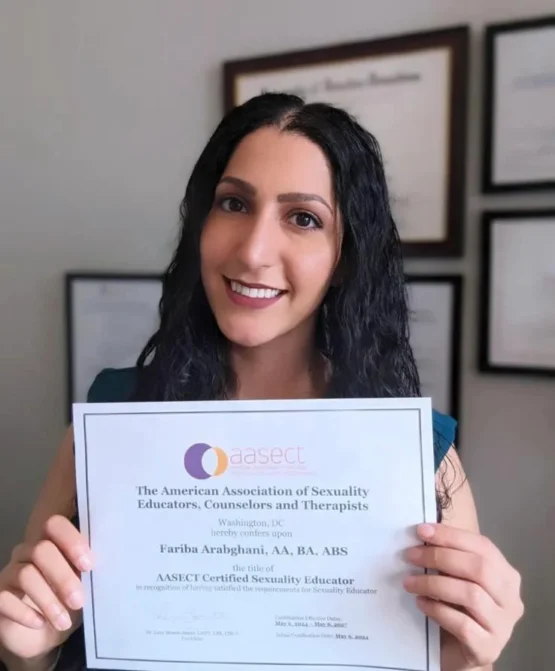I was recently featured in a Sensuali blog post titled “Introducing Polyamorous Kink & Intimacy Coach, Lilith Foxx,” That spotlight inspired me to dig deeper here. As a polyamory and kink coach, I navigate the overlap of multiple identities—polyamorous, kinky, queer, and neurodivergent. Those experiences shape every workshop I teach and every private session I guide.

Why Polyamory and Kink Often Collide
Polyamory and kink can feel like separate lanes, yet they share three core pillars: transparent communication, rock-solid consent, and a willingness to question default scripts about love and power. When clients work with a polyamory and kink coach, they discover that mastering those pillars is less about textbook theory and more about daily habits—check-ins before a scene, calendar reviews for date equity, and language that lets each partner feel heard.
A Practical Definition
A polyamory and kink coach helps clients blend the logistics of multi-partner life with the emotional nuance of power exchange. Think of it as relationship strategy plus erotic creativity, wrapped in inclusive, shame-free education.
Embracing Authenticity in Relationship Design
The Sensuali feature highlighted my commitment to authenticity. Authenticity asks tough questions: Does this rule serve us, or is it borrowed from monogamy culture? Does this power dynamic feel empowering or performative? As a polyamory and kink coach, I encourage clients to replace “shoulds” with “wants.” That process involves unlearning scripts that say intimacy must be scarce or that dominance must look harsh. When clients choose what feels genuine, connection deepens and resentment fades.
Micro-Practice: The Two-Yes Rule
Before any new activity—whether adding a partner or introducing rope—both people give an enthusiastic yes. One tepid “I guess” pauses the plan. This tiny practice turns authenticity from an idea into muscle memory.
Inclusivity and Accessibility: Non-Negotiable Foundations
As a BIPOC, queer, and neurodivergent practitioner, I know that many community spaces still overlook marginalized bodies. My coaching frameworks therefore include:
- Sensory-friendly scene planning for ADHD or autistic players
- Cultural humility checkpoints so power dynamics do not echo systemic oppression
- Language swaps that remove gender assumptions in protocol or titles
- Sliding-scale sessions because economic inclusion is part of ethical practice
The goal is a roadmap any client can adapt, no matter their identity constellation.
Practical Strategies Clients Love
A good polyamory and kink coach delivers more than pep talks. Here are tools I use every week:
1. Color-Coded Calendaring
Assign each partner (or dynamic) a color. At a glance you can see who gets quality time and who needs attention. This visual cue prevents accidental hierarchy.
2. Negotiation Checklists
Before a scene, partners each complete a yes-no-maybe grid covering toys, language, aftercare, and photo consent. Sharing the sheets eliminates the guesswork that can ruin trust later.
3. Compersion Reframes
Jealousy often signals unmet needs. I guide clients to state the need first—“I need reassurance tonight”—then build a ritual that meets it. Over time jealousy transforms into genuine excitement for a partner’s joy.
4. Sensation-Mapping for Neurodivergent Bodies
Clients trace body outlines on paper and color areas green for “please touch,” yellow for “check first,” and red for “avoid.” This turns abstract boundaries into a clear diagram partners can reference mid-scene.
Overcoming Common Challenges
Time Blindness and Scheduling Fatigue
Neurodivergent clients sometimes lose track of dates. I recommend shared digital calendars with 24-hour reminders and a five-minute morning review. A polyamory and kink coach can also help partners create “buffer blocks” so transitions between dates include decompression time.
Mismatched Risk Profiles
Some partners cherish intensive rope; others prefer paddle play. Instead of forcing compromise, we map overlapping interests and schedule “parallel play” nights so everyone feels included without diluting excitement.
Navigating Public Perception
Clients of color or trans clients may face additional scrutiny. We craft elevator pitches and exit strategies so they can discuss relationships confidently or protect privacy when needed.
Case Snapshot: Blending New Dynamics
Jordan and Maya came to me struggling with time allocation after inviting a third partner, Leo, into their D/s dynamic. Our plan:
- Calendar audit: Noted Jordan received only half the solo dates Maya enjoyed.
- Power rotation: Each month, dominance duties shifted to avoid default hierarchies.
- Scene debrief form: A shared Google Doc captured feelings, ensuring Leo’s voice carried equal weight.
Within six weeks, jealousy spikes dropped, and all three reported higher satisfaction. This outcome is typical when a polyamory and kink coach introduces structure without stripping spontaneity.
What a Coaching Session Looks Like
- Intake and goal setting—we discuss identities, boundaries, and success metrics.
- Education module—maybe attachment theory, maybe rope safety; content flexes to needs.
- Skill practice—communication drills, negotiation role-play, or sensory mapping.
- Action plan—clients leave with two or three concrete steps, never homework overload.
- Follow-up email—resources, reading, and accountability check-ins.
Most clients book four to eight sessions. After the core goals stick, many return quarterly for tune-ups.
Frequently Asked Questions
Do I need all partners present?
Not always. Solo sessions can prep you for group discussions. Joint visits are ideal for conflict resolution.
Is virtual coaching effective?
Yes. Video calls let partners in different cities meet together. Shared documents keep progress visible.
Will coaching replace therapy?
No. A polyamory and kink coach focuses on skills and strategy. Trauma healing or mental-health diagnoses belong with licensed therapists, though we can collaborate.
Key Takeaways
- A polyamory and kink coach merges relationship logistics with erotic creativity.
- Authenticity strengthens when partners swap “should” for “want.”
- Inclusive practices ensure marginalized identities thrive, not just survive.
- Tools like color-coded calendars, negotiation checklists, and compersion reframes turn theory into habits.
- Coaching sessions are action oriented and adapt to solo clients or full polycules.
Next Steps
- Ready to build custom negotiation templates? Download my checklist.
- Curious about sensory-friendly impact ideas? Read Sensory Friendly Impact Play next.
- Want one-on-one guidance? Book a coaching action plan session and see how a polyamory and kink coach can support your journey.
Read the original article on Sensuali: Introducing Polyamorous Kink & Intimacy Coach, Lilith Foxx


